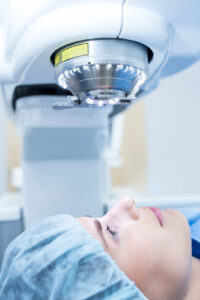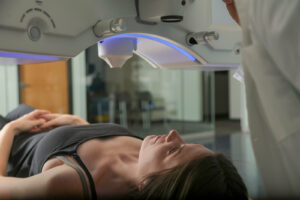LASIK has been around for 30+ years now and has changed millions of people’s lives. Even so, many people are on the fence for one reason or another. Here are seven things you need to know about LASIK before you come in for a complimentary consultation.
#7 LASIK Might Not Be Right For you
15-20% of people are not a good candidate for LASIK, for a variety of reasons. We will not proceed with surgery unless our surgeons believe you will have a successful outcome. There are some other procedures that may still accomplish your goals, so don’t give up hope of being free from glasses or contact lenses.
#6 Know Your Surgeon

There are many thousands of doctors in America that can perform LASIK surgery. That doesn’t mean that you want to go to them. Look for a board-certified ophthalmologist and ask them about their experience and complication rate.
You can learn more about Dr. Nicole Anderson-Weiss, MD or Dr. Michael Shapiro, MD.
#5 You’ll Be Awake

While we give you medicine to help relax your nerves on the day of, you will be awake and conversational during your procedure. You’ll need to follow your surgeons simple directions, like looking a certain direction. There are safety measures in place, so nothing bad happens if you’re not following directions.
#4 Research The Risks
LASIK is widely considered to be a safe procedure and the complication rate is under 1%. You are more likely to be in a car accident this year than have a LASIK complication.
However, it is still a surgical procedure and the unexpected can happen. Think about some of the risks of LASIK while you’re deciding if it’s right for you:
- Dry eyes
- Halos or glare from lights
- Under-correction or over-correction of vision
- Change or loss of vision
- Light sensitivity
- Infection
#3 Know What Happens During

As you now know, you’ll be awake during LASIK. Get prepared and learn about what happens and what you’ll be doing on the day of.
Here at Anderson & Shapiro Eye Care, you’ll arrive at our surgery center to get checked-in. Our nursing staff will take you back to a private area to check your vital signs and give you medicine to relax.
After that, you’re walked back to our operating suite and you lay down on a comfortable bed. There are 2 large laser machines: the first uses laser energy to make a small flap on the surface of your eye and the second applies a custom treatment to your eye. This is repeated for your other eye and then you’re taken out to a recovery area.
#2 Follow Your Directions for After Care

In the recovery area of the surgery center, our nurses will review your after care instructions with you. We’ll be honest, the few hours after your LASIK treatment will be uncomfortable. It might range from feeling like an eyelash or two are in your eyes or it might feel like someone sprayed pepper in your eyes. The absolute best thing you can do after your procedure is take a nap or rest with your eyes closed.
You’ll have some medicated eyedrops to use, these help promote proper healing. You should also use plenty of preservative free artificial tear eyedrops, you might find 8-10 times a day for the first few days really helps your comfort and vision. Just make sure to space eyedrops by about 5 minutes to make sure you’re not rinsing the medicine out.
Otherwise, avoid rubbing your eyes, hot tubs, and swimming pools for a few weeks and wear an eye shield when sleeping.
#1 Ask Questions Ahead of Time
If you’re anything like most people, you get to a doctor, go through your visit, and then remember the 10 questions you wanted to ask right as you’re getting home. Come prepared and consider writing down your most important questions about your surgeon, what to expect before, during, or after, and anything else you come up with!